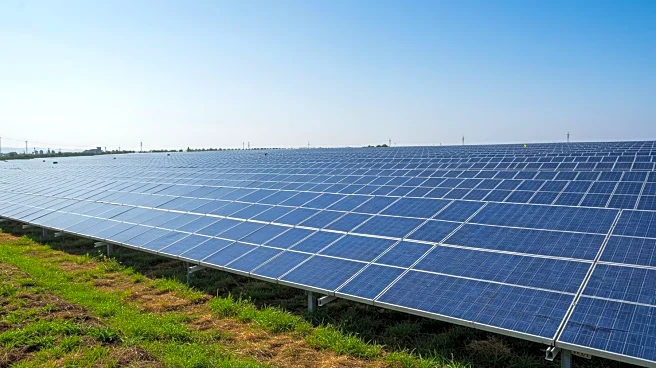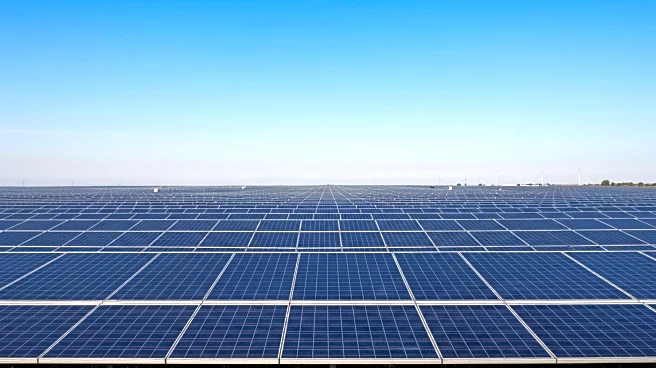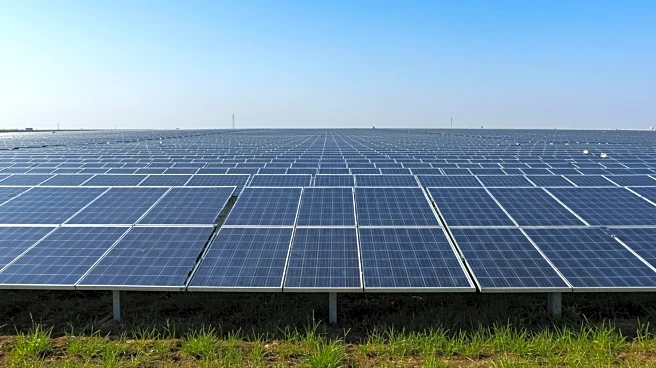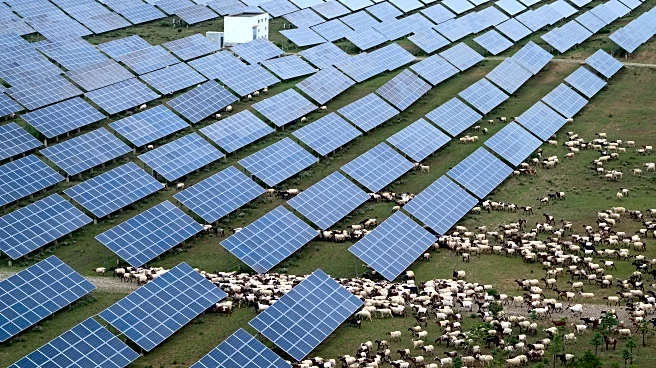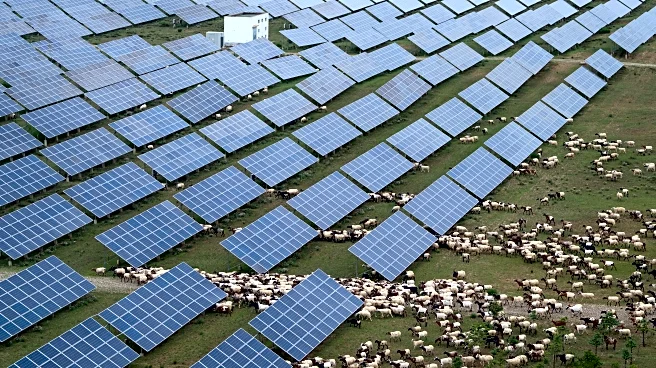Rapid Read • 9 min read
China is rapidly advancing its solar energy capabilities, with plans to construct what is claimed to be the world's largest solar farm on the Tibetan plateau. This development is part of China's broader strategy to reduce carbon emissions, which have recently shown a structural decline. In the first half of 2025, China's carbon emissions decreased by 1% compared to the previous year, continuing a trend that began in March 2024. The country has installed 212 gigawatts of solar capacity in the first six months of the year, surpassing the entire solar capacity of the United States. This shift is significant as China aims to achieve carbon neutrality by 2060, requiring an average annual reduction of 3% in emissions over the next 35 years.
AD
China's efforts to expand its solar energy infrastructure are crucial in the global fight against climate change, given its status as the world's largest emitter of greenhouse gases. The decline in emissions, despite growing electricity demand, indicates a potential decoupling of economic growth from carbon emissions. This development offers a model for other nations seeking to balance economic development with environmental sustainability. However, China's continued reliance on coal poses a challenge to its climate goals, necessitating a shift towards less resource-intensive economic sectors. The success of China's solar initiatives could influence global energy policies and encourage further investment in renewable energy technologies.
China faces the challenge of integrating its growing solar capacity into the national grid, which is currently optimized for coal-fired power plants. This requires significant changes in grid management and the construction of new transmission lines to transport electricity from the sparsely populated west to industrial centers in the east. Policymakers are aware of these challenges and are working on solutions, but the transition will require substantial adjustments in both infrastructure and policy. The outcome of these efforts will be closely watched by international stakeholders, as it could set a precedent for large-scale renewable energy integration.
The expansion of solar farms in China is not only an environmental initiative but also has ecological and economic implications. The solar panels on the Tibetan plateau act as windbreaks, reducing dust and promoting vegetation growth, which supports local agriculture and livestock. This 'win-win' situation highlights the potential for renewable energy projects to contribute to local economies and ecosystems. Additionally, the success of such projects could shift global perceptions of China's role in climate change mitigation, positioning it as a leader in renewable energy development.
AD
More Stories You Might Enjoy
